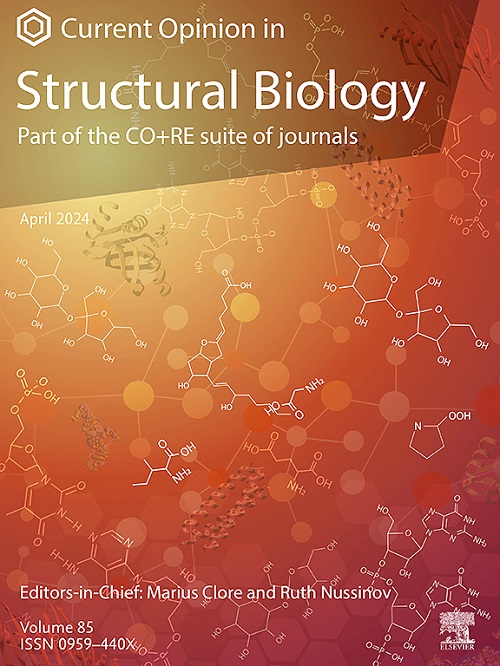The evolution and mechanism of bacterial and archaeal ESCRT-III-like systems
IF 6.1
2区 生物学
Q1 BIOCHEMISTRY & MOLECULAR BIOLOGY
引用次数: 0
Abstract
The endosomal sorting complex required for transport-III (ESCRT-III) system is an ancient protein family involved in membrane remodelling. Recent phylogenetic and structural analyses reveal its conservation across the tree of life, including bacteria and archaea, suggesting an evolutionary origin predating the last universal common ancestor. These findings underscore the importance of the ESCRT-III superfamily to our origins, particularly with the recognition of their contribution to eukaryogenesis through the Asgard archaea lineage. Bacterial systems, often with a single ESCRT-III–like protein, offer a simple model for understanding how ESCRT-III can function as both membrane sensor and sculptor. This review explores the structural dynamics, evolutionary trajectories, and biological significance of ESCRT-III in bacteria and archaea. We describe how ESCRT-III polymerises and assembles conserved filaments with the coating of flat or positively curved membranes prevalent, at least in vitro. Finally, we highlight common mechanistic principles and unique adaptations that enable ESCRT-III systems to support diverse cellular processes across evolutionary domains.
细菌和古细菌escrt - iii样系统的进化和机制
运输- iii (ESCRT-III)系统所需的内体分选复合体是一个参与膜重塑的古老蛋白质家族。最近的系统发育和结构分析揭示了它在包括细菌和古细菌在内的生命之树上的保守性,这表明它的进化起源早于最后一个普遍的共同祖先。这些发现强调了ESCRT-III超家族对我们起源的重要性,特别是认识到它们通过阿斯加德古生菌谱系对真核发生的贡献。细菌系统通常具有单一的ESCRT-III样蛋白,为理解ESCRT-III如何同时发挥膜传感器和雕刻器的作用提供了一个简单的模型。本文综述了ESCRT-III在细菌和古细菌中的结构动态、进化轨迹及其生物学意义。我们描述了ESCRT-III如何聚合和组装保守的细丝,至少在体外普遍存在平坦或正弯曲膜的涂层。最后,我们强调了共同的机制原理和独特的适应性,使ESCRT-III系统能够支持跨进化域的多种细胞过程。
本文章由计算机程序翻译,如有差异,请以英文原文为准。
求助全文
约1分钟内获得全文
求助全文
来源期刊

Current opinion in structural biology
生物-生化与分子生物学
CiteScore
12.20
自引率
2.90%
发文量
179
审稿时长
6-12 weeks
期刊介绍:
Current Opinion in Structural Biology (COSB) aims to stimulate scientifically grounded, interdisciplinary, multi-scale debate and exchange of ideas. It contains polished, concise and timely reviews and opinions, with particular emphasis on those articles published in the past two years. In addition to describing recent trends, the authors are encouraged to give their subjective opinion of the topics discussed.
In COSB, we help the reader by providing in a systematic manner:
1. The views of experts on current advances in their field in a clear and readable form.
2. Evaluations of the most interesting papers, annotated by experts, from the great wealth of original publications.
[...]
The subject of Structural Biology is divided into twelve themed sections, each of which is reviewed once a year. Each issue contains two sections, and the amount of space devoted to each section is related to its importance.
-Folding and Binding-
Nucleic acids and their protein complexes-
Macromolecular Machines-
Theory and Simulation-
Sequences and Topology-
New constructs and expression of proteins-
Membranes-
Engineering and Design-
Carbohydrate-protein interactions and glycosylation-
Biophysical and molecular biological methods-
Multi-protein assemblies in signalling-
Catalysis and Regulation
 求助内容:
求助内容: 应助结果提醒方式:
应助结果提醒方式:


